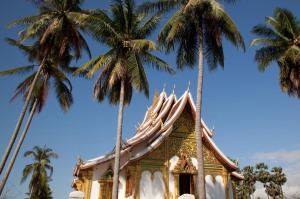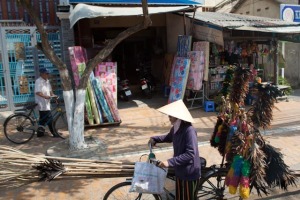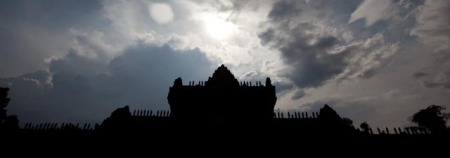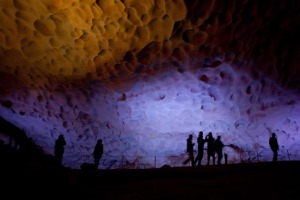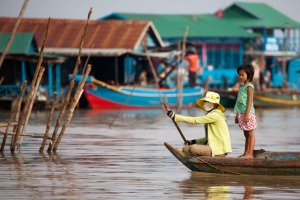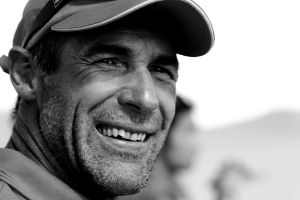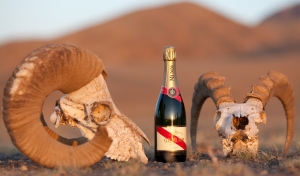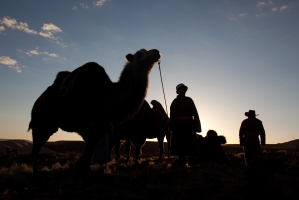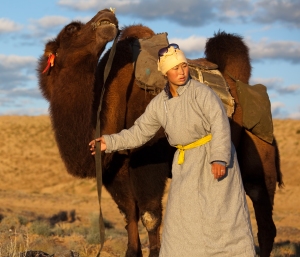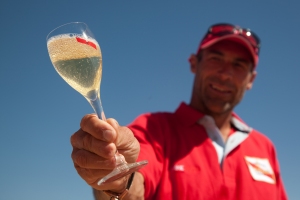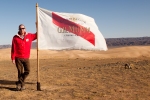From the bustling streets of Ho Chi Minh City to the awe-inspiring grandeur of Angkor Wat, Indochina is a feast for the traveller. Nick Smith tries to get his breath back…
Picture four million mopeds, scooters and motorcycles. Now picture all of them carrying at least two people, sometimes an entire family, sometimes even a cow. Behind the boxes, packing cases, crates, string bags, bundles of bamboo, building materials, fresh market produce and cages of chickens there are the drivers. These are the unsung heroes who thread through the congested arteries of an oriental metropolis with the precision and grace of a ballet dancer. This is Ho Chi Minh City and it’s magnificent.
The best thing about Ho Chi Minh City, or Saigon as you’ll end up calling it, is simply being there. You can visit the reconstructed Cu Chi tunnels where the Viet Cong held out during the war. You can visit the War Remnants Museum and marvel at the tenacity of a nation that’s brought itself back from the brink of untold horror. But the best thing is to just wander the crowded streets, or attempt to master the dangerous art of crossing the road. Or you can do as I did and stop for a dish of local noodle soup called pho and read Graham Greene’s The Quiet American in the city where it was written.
Saigon is the starting point for my escorted tour around Indochina, an anticlockwise journey that will take me through Vietnam, Laos and Cambodia. We’ve only got eleven days, but my guide – an outdoorsy Australian called Dave – tells me we can just about do it. He knows this because, having turned his back on the banking industry to do ‘something more interesting with my life,’ he does it for a living with regional specialists Travel Indochina. Dave knows this part of the world inside out, from the mind-boggling array of currencies to an equally varied, but much more interesting, range of cuisine.
None more interesting than one of Vietnam’s real specialities, kopi luwak, which I drank in a café in Hanoi after an evening watching the world famous Water Puppets, that enact scenes of ancient history. ‘Weasel Coffee,’ as it is sometimes known, is probably the most expensive coffee in the world, and once you’ve sampled its subtle undertones of chocolate and toasted hazelnut, you’ll never want Starbucks again. If you don’t know how it’s made, you might want to keep it that way, as the manufacturing process starts with fresh beans negotiating their way through the digestive tract of a civet. This supposedly causes a chemical reaction that breaks down the beans’ enzymes, unleashing their full flavour.
From Hanoi it’s a short drive east to one of Vietnam’s most iconic landscapes. Halong Bay is where immense monolithic limestone karsts rise out of the mist like gravestones in a gothic churchyard. As you sail among them in a traditional junk there’s a couple of essential stop-offs, including the Lau Dai caves, followed by a sharp mountain hike for what’s possibly the best view on earth. It’s an ethereal experience and one to be lingered over. But all too quickly the time comes for us to enter the altogether different world of Luang Prabang in Laos.
Monks of the Mekong
Perched on the banks of the mighty Mekong River, encircled by vertiginous mountains, Luang Prabang has a quiet, undiscovered charm. Traditional wooden Lao houses and boutique guesthouses blend in with sumptuous ancient Buddhist temples. The air is rich with fragrances of oleander, jasmine and bougainvillea.
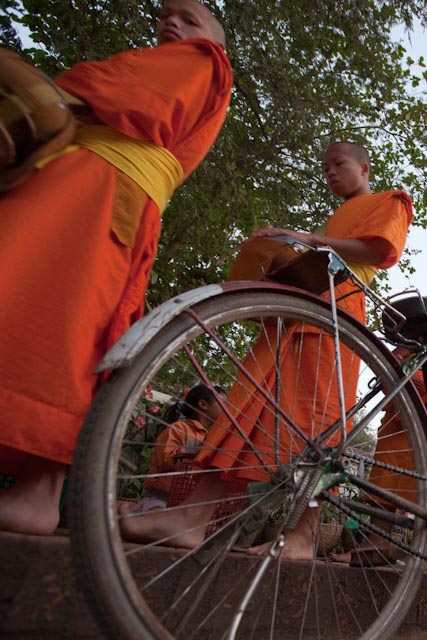
Monks in saffron-dyed robes in Luang Prabang walk along the street collecting alms. Photo: Nick Smith
Laos is a tiny speck of a forgotten land, often overlooked by today’s busy box-ticking tourist. It’s not an obvious destination in its own right, and so it’s a real bonus to find it playing such a spellbinding cameo on an escorted tour. Once there you soon realise that this is one of the most picturesque places imaginable. It’s also incredibly informal and stress-free. Tempered by the cooling effect of the Mekong and the fresh breezes that come down from the forests, this is the ultimate antidote to bustling Vietnam. Roadside restaurants and cafés serve exquisite steamed fish in banana leaves, sticky rice or spicy pan-fried noodles.
One of Luang Prabang’s most striking temples is the dramatic and serene Wat Mai. Its beauty is such that when the Chinese invaded Laos a century ago, they refused to destroy it. At Wat Mai a young monk tells us about the daily routine and rituals of his life in Buddhism. As we leave him to his meditations, we’re invited to play a quick game of petanque, the local sport, before heading for Wat Pha Bhat Tai. Here, to the sound of monks chanting, we watch the sun set over the sandbanks of the Mekong, fishermen casting their nets.
But the real highlight of any stay in Luang Prabang is a pilgrimage to watch the monks collecting alms. In the early morning light they walk along the street gathering offerings of rice, sweets and coins from locals, whose duty it is to feed them. After the monk ritual, and with a whole day still ahead of us, we return to the river to take a traditional barge upstream to the mysterious ‘cave of a thousand Buddhas’. At Pak Ou we disembark and climb a steep staircase cut through the rock to reach grottos high in a cliff-face. We are rewarded with the stunning sight of thousands of effigies festooned with garlands of flowers and dusted with the ash of thousands of incense burners.
Luang Prabang is paradise for travel photographers who will find the monks in their saffron-dyed robes, the ceramic and gilt ornamentation of the temples and brightly coloured tuk-tuks irresistible. But Laos is as much about its arts and crafts as it is its culture, and the seemingly endless night market that lines the main street is as good as any in the world. Superb juniper paper goods, silver work and silk scarves provide all the retail therapy you could ever need.
Sunrise over the temples
It was with bags groaning that we flew south to Cambodia, where at Siem Reap we tumbled out of the plane into a flat landscape punctuated by rice paddies and coconut palms. Of course, everyone who goes to Cambodia will visit the legendary temple complex of Angkor Wat and you will too. This was where Dave really showed off his local knowledge by smuggling his group in through the lesser-used eastern gate, which meant we were able to watch the sun rise over Angkor Wat’s famous quincunx of sandstone towers far away from the crowds.
Provided you’re prepared to step off the beaten path, you could spend weeks wandering among the lonely, deserted ruins and hardly see another person. But most, constrained by time, will stick to the well-trodden tourist circuit, which is spectacular in its own right. There is a bewildering array of carvings, friezes, and bas-reliefs set among the silk-cotton trees whose buttresses weave their way in and out of the tumbled masonry. Sadly there are times when much of the mystique is lost, the spell broken by the continual reminder that we’re on the ‘Tomb Raider’ movie set. But it’s part of the fun, and watching crowds of Japanese and German tourists pose for their hero shots in front of the iconic architecture is a welcome break from the occasional ‘temple fatigue’ that can afflict even the most dedicated amateur archaeologist.
Although it is the beating heart of Cambodia, there’s more to this country than Angkor Wat. But to find out what really makes the country tick, you’ll need to visit the artisanal silk producers, where hand-spun and dyed textiles make wonderful souvenirs. There’s also a fascinating local ballet performed in traditional costume, which is a far cry from Saddlers Wells. At the end of the performance less reserved members of the audience jump up on stage to have their photo taken with the dancers. It’s about as surreal as you can get, as is the Dr Fish foot massage in the night market, where for a few thousand Riel (about two dollars American) you can have the dead skin chewed off your feet by hundreds of ravenous flesh-eating gouramis.
The length of time you can keep your feet in the communal pool is something of a badge of honour, as the sensation of being eaten alive is not a pleasant one. I managed to last for half and hour, before the hungry shoal moved on to a new punter with (presumably) tastier feet. I left with a definite sense of regret that this unorthodox massage has reached its end. As I dawdled back to my hotel drenched by a tropical rainstorm I discovered a new spring in my step.
With refreshed feet, the following day we set off for a day’s sailing on Tonlé Sap – the largest freshwater lake in South East Asia – where we encountered the famous floating villages. The dramatic rise and fall of the shoreline with the seasons means that many of the local fishermen live in houses on stilts. But some go one better and build floating homes that cluster together in drifting communities. We sailed out to Chong Kneas where life is identical to any other fishing village, only it’s all on water. The children paddle themselves to floating school in buckets and are called ‘bucket kids’. There’s a floating pig farm, a bar, a bookshop and even a souvenir stall where we cram to bursting point the last spaces in our luggage.
It’s impossible to visit Indochina without feeling the ever-present shadow of imperialism and invasion. History has been more unkind to this region than most and yet hope and regeneration seems to radiate from all corners, nowhere more so than Ho Chi Minh City. You could spend a year in Indochina and still feel that you’d only scratched the surface. But a whistle-stop adventure in this part of the world will leave you with a feeling that seems to be so rare in travel today. That you will simply have to come back again and start all over again.
